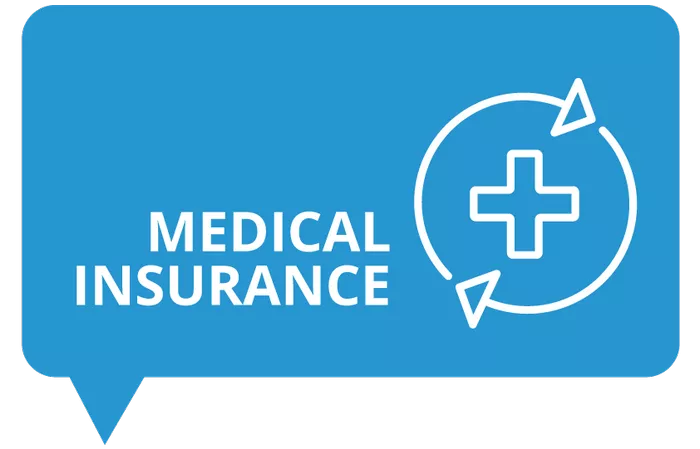Healthcare costs have been a topic of concern for individuals, families, and policymakers alike. One significant aspect of healthcare expenses is medical insurance. Medical insurance provides financial protection against the high costs of medical care, offering coverage for various healthcare services, including doctor visits, hospital stays, prescription medications, and preventive care. However, the cost of medical insurance varies widely depending on several factors. Understanding the average cost of medical insurance requires examining these factors comprehensively.
Factors Affecting the Cost of Medical Insurance
Several factors influence the cost of medical insurance, making it challenging to pinpoint a single average. These factors include:
1. Age: Age is a significant determinant of insurance premiums. Generally, younger individuals tend to pay lower premiums compared to older individuals. This is because younger people are statistically less likely to have significant health issues and therefore pose a lower risk to insurance companies.
2. Location: The cost of medical care can vary significantly depending on where you live. Urban areas typically have higher healthcare costs due to factors such as higher demand for services, higher cost of living, and greater healthcare infrastructure.
3. Health Status: Your current health status and medical history play a crucial role in determining insurance premiums. Individuals with pre-existing conditions or a history of serious illnesses may face higher premiums or have limited options for coverage.
4. Coverage Level: The extent of coverage you choose affects the cost of your medical insurance. Plans with higher coverage levels, lower deductibles, and more extensive provider networks generally come with higher premiums.
5. Insurance Provider: Different insurance companies offer varying premium rates for similar coverage. Factors such as the insurer’s underwriting policies, administrative costs, and profit margins can influence premium prices.
6. Type of Plan: Medical insurance plans come in various types, including Health Maintenance Organizations (HMOs), Preferred Provider Organizations (PPOs), and High-Deductible Health Plans (HDHPs). Each type has different cost structures, coverage options, and out-of-pocket expenses.
7. Subsidies and Tax Credits: Government subsidies and tax credits may be available to individuals and families with lower incomes to help offset the cost of medical insurance. The availability and amount of these subsidies depend on factors such as income level and household size.
Average Cost of Medical Insurance
While it’s challenging to determine a precise average cost of medical insurance due to the multitude of factors involved, several studies and reports provide insights into typical premium amounts.
According to the Kaiser Family Foundation’s 2021 Employer Health Benefits Survey, the average annual premium for employer-sponsored health insurance in the United States was $7,470 for single coverage and $21,342 for family coverage. However, it’s essential to note that these figures represent premiums paid by both employers and employees, with employees typically contributing a portion of the premium through payroll deductions.
For individuals purchasing insurance through the Health Insurance Marketplace established by the Affordable Care Act (ACA), premium costs vary based on factors such as income, household size, age, and location. According to the Centers for Medicare & Medicaid Services (CMS), the average monthly premium for a benchmark plan (the second-lowest-cost silver plan) in 2021 was $452 before any applicable subsidies.
Furthermore, data from eHealth’s Health Insurance Price Index Report for 2021 indicates that the average monthly premium for an individual health insurance plan purchased through eHealth was $456, with an average deductible of $4,364.
Strategies to Lower Medical Insurance Costs
While healthcare costs, including insurance premiums, can be substantial, there are strategies individuals and families can employ to mitigate these expenses:
1. Shop Around: Compare different insurance plans to find the most cost-effective option that meets your healthcare needs.
2. Consider High-Deductible Plans: High-deductible health plans often have lower premiums but require higher out-of-pocket costs before insurance coverage kicks in. These plans can be advantageous for healthy individuals who don’t anticipate frequent medical expenses.
3. Utilize Preventive Services: Take advantage of preventive care services covered by insurance plans, such as annual check-ups, screenings, and vaccinations, to maintain optimal health and detect potential issues early, reducing the need for more costly treatments down the line.
4. Explore Health Savings Accounts (HSAs) and Flexible Spending Accounts (FSAs): These accounts allow you to set aside pre-tax dollars to pay for qualified medical expenses, providing potential tax savings and helping offset out-of-pocket costs.
5. Lifestyle Modifications: Adopting a healthy lifestyle by exercising regularly, eating a balanced diet, and avoiding harmful habits such as smoking can reduce the risk of chronic diseases and lower healthcare costs over time.
6. Consider Subsidies and Tax Credits: If you qualify based on income and other eligibility criteria, explore options for government subsidies and tax credits to help make insurance premiums more affordable.
Conclusion
The average cost of medical insurance varies significantly depending on factors such as age, location, health status, coverage level, insurance provider, and type of plan. While precise figures may be challenging to determine due to these complexities, understanding the factors influencing insurance premiums can help individuals make informed decisions when selecting coverage. Employing strategies to lower medical insurance costs, such as shopping around, utilizing preventive services, and exploring subsidy options, can help mitigate the financial burden of healthcare expenses and ensure access to essential medical care.


